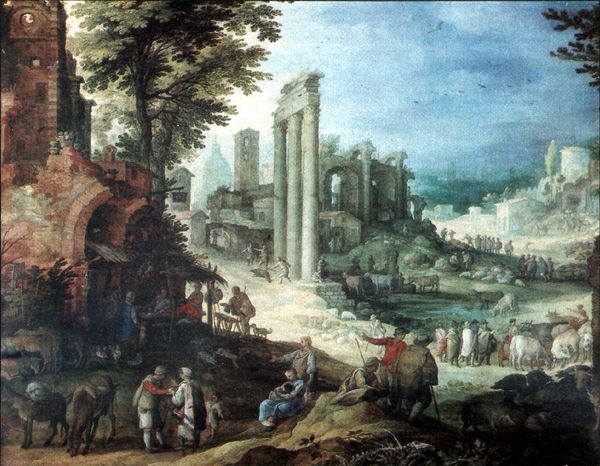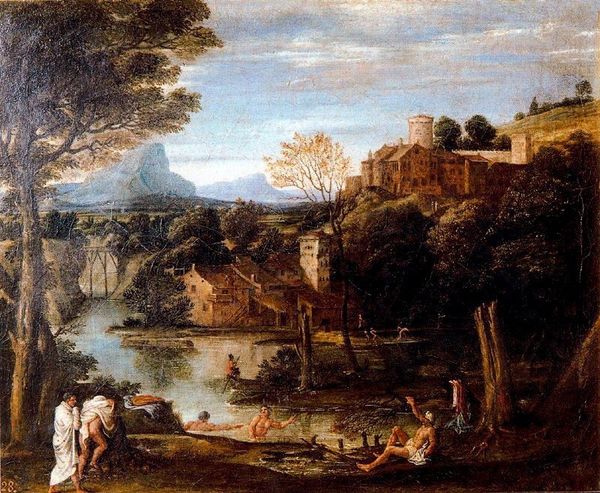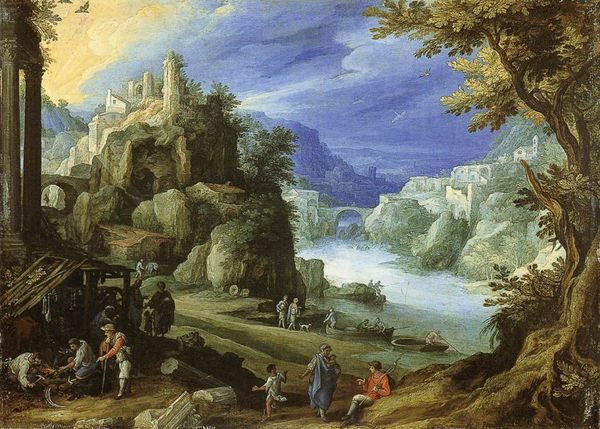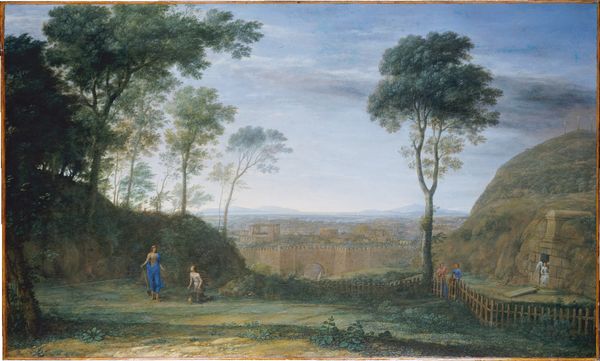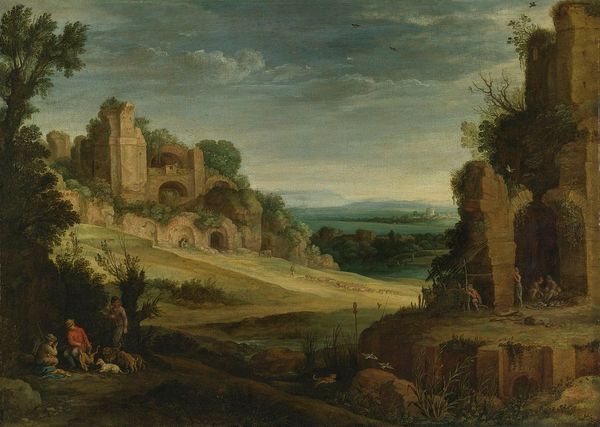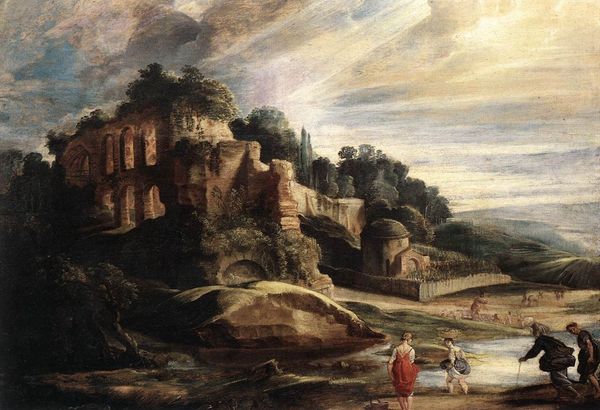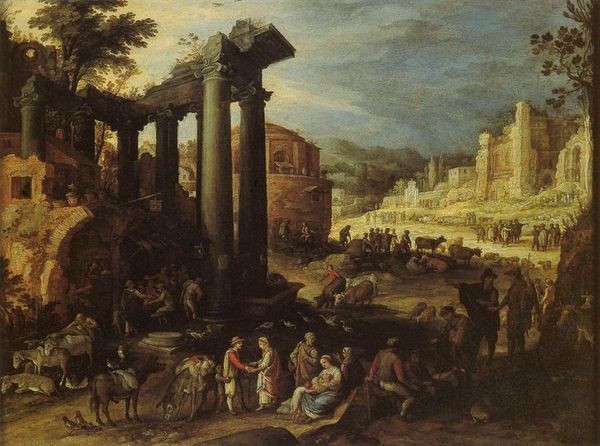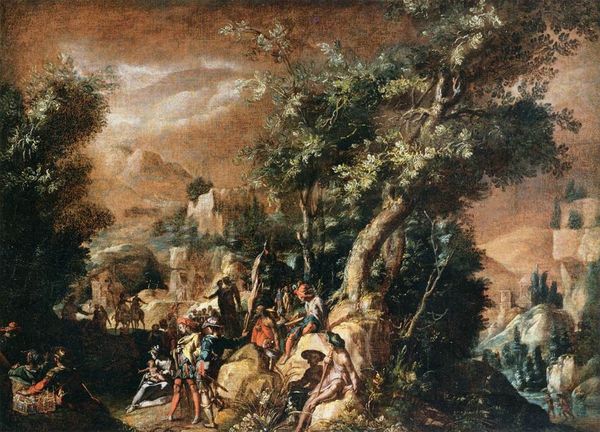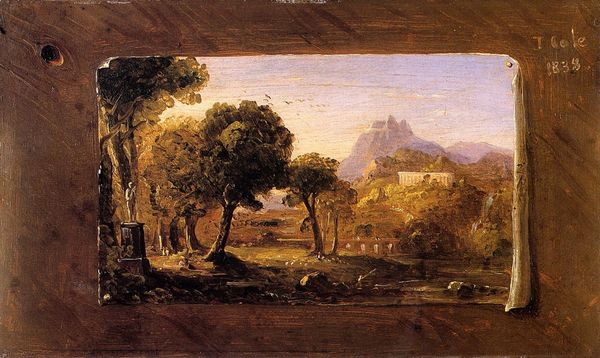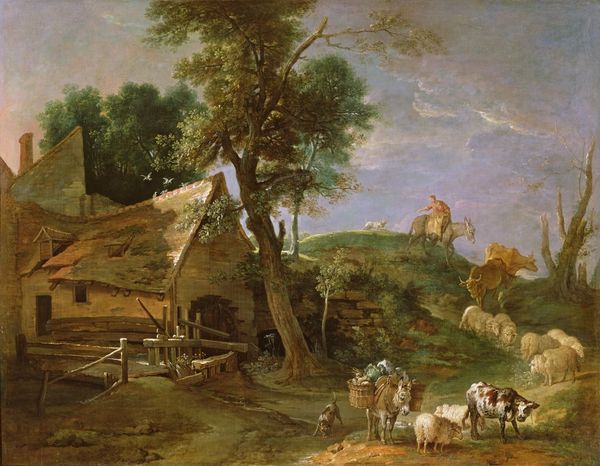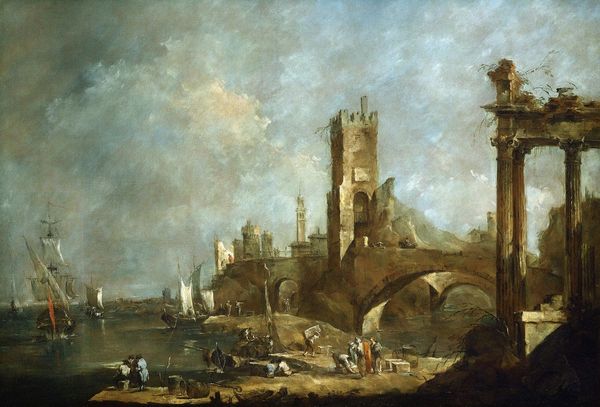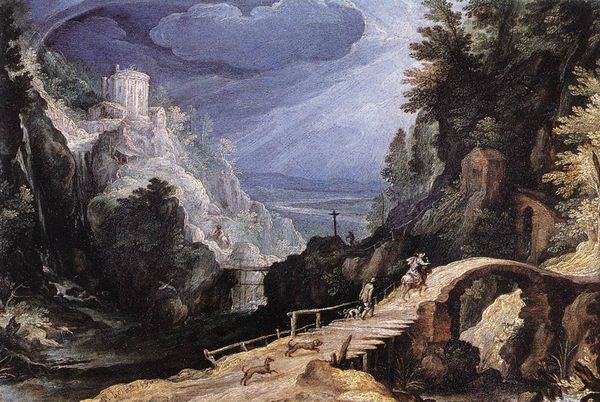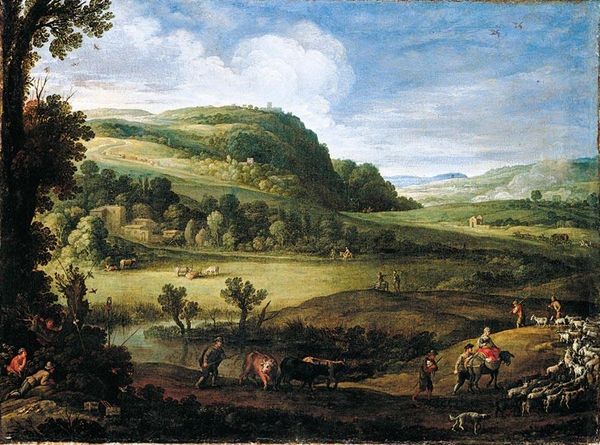
painting, oil-paint, architecture
#
painting
#
oil-paint
#
landscape
#
11_renaissance
#
romanesque
#
oil painting
#
cityscape
#
genre-painting
#
history-painting
#
architecture
Copyright: Public domain
Curator: We are looking at Paul Bril's "Landscape with Roman Ruins," an oil painting from around 1580. Editor: My first impression is of tranquility, almost melancholy. The soft light and decaying structures evoke a sense of faded glory. Curator: The painting layers symbols. On one level, this juxtaposition speaks to the impermanence of human achievements, echoing classical themes of *memento mori*. Rome's decline becomes a symbol of life's transience. Editor: Absolutely, but that narrative of decline is also loaded. Whose glory are we mourning? The Roman Empire, built on conquest and slavery? Bril romanticizes a specific version of history, perhaps unintentionally masking the violence inherent in that "glory." Curator: It is interesting how the artist creates the architecture, these ancient ruins act almost like natural features of the land itself. Notice how they harmonize with the trees and hills—architecture, nature, and time all meld together. This wasn’t just observation. Bril constructs an idea as much as representing the visible world. Editor: And within this idealized past, we have contemporary figures, too, traveling, negotiating, maybe even begging by the roadside. The lives of ordinary people persist even amongst these grandiose remnants, refusing to be erased by history. We see evidence of human lives occupying that space between idealized glory and its slow erasure. Curator: The light and shadow play here, too, I think adds to the reading that these architectures carry memory within them. And the scale is remarkable, right? Compared to the figures at the bottom? Everything suggests we are witnessing time on a grand scale. Editor: Agreed. Seeing it like this, I'm more aware of how landscape paintings served as powerful tools for shaping cultural memory, particularly in relation to empires and identity. We’ve talked today of both individual fragility and collective permanence, of erasures and of persistence. It is never simple, is it? Curator: Indeed, I keep going back to those symbols, as that cultural continuity helps to interpret visual communication beyond literal representation and connects me across history to a place and moment of making.
Comments
No comments
Be the first to comment and join the conversation on the ultimate creative platform.
